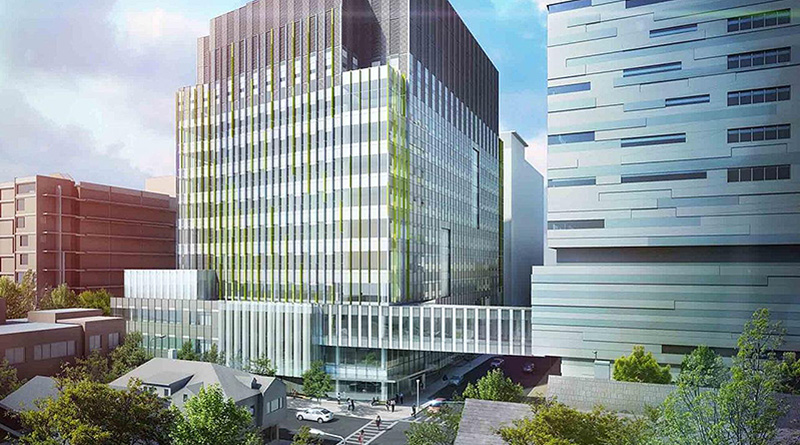Brigham and Women’s Hospital Opens Doors at New Facility
BOSTON— Brigham and Women’s Hospital’s Building for Transformative Medicine located in Boston opened its doors to patients Oct. 3. The building is designed to serve patients suffering from chronic neurologic, orthopedic, and rheumatologic conditions like Alzheimer’s disease, Parkinson’s disease and rheumatoid arthritis.
Construction began June 2013 and the building currently features eight floors of research laboratories, two floors of clinics, a state-of-the-art imaging facility, a conference and teaching center and a 400 car garage, according to lead architects from Seattle-based NBBJ. It also features artwork that highlights the human medical breakthroughs related to the brain and body.
“The building’s design imparts the message that there’s something special inside,” said Steve Dempsey, director of planning and construction at Boston-based Partners Healthcare, in a statement.
Boston-based Suffolk Construction is responsible for building the 675,000-square-foot hospital consisting of 14 floors, with 13 of them located above ground.

Photo Credit: NBBJ
The first four floors are designated as administrative spaces and cater to patients who are not admitted to the hospital. The upper floors are all dedicated to research, allowing Brigham to consolidate seven of its nearly 15 research locations into one space. The hospital expects to save $19 million annually by no longer having to lease approximately 160,000-square-feet of research space.
“For Suffolk Construction, the biggest challenge is that the Boston market has more construction underway and planned for the next three to five years than it’s had in the past 35 years,” said Jason Seaberg, senior project manager at Suffolk Construction, in a statement. “It’s a struggle to find qualified subcontractors.”
Other challenges included designing the building on a residential street where the construction crew was required to control the dust, noise and lights caused by the project. The construction site was also shared with Tenants of Harvard, a 140 apartment multifamily building for which prep work began right after this project started. To make room, crews moved construction trailers and managed to work in tight quarters.
The building will connect the existing hospital campus via the “Pike” a quarter-mile-long pedestrian circulation that is now anchored to new facility, according to a statement from NBBJ.
The building is designed to meet LEED Gold certification and comes complete with a 40,000-gallon cistern that captures stormwater for plumbing and other mechanical systems. The hospital will also feature dedicated parking spaces for electric cars along with a garage that makes space for 110 bicycles.
An innovative façade provides shading for the building while reducing energy consumption and lowering its dependence on HVAC. The façade also helps to lower the building’s temperature while reducing glare. A green roof was placed on top of the hospital to help keep it cool during summer months.

